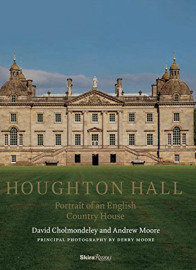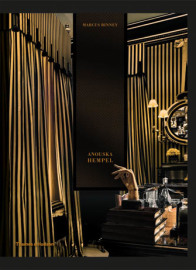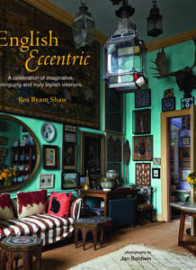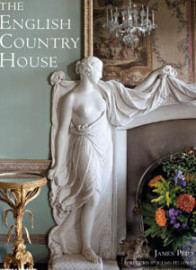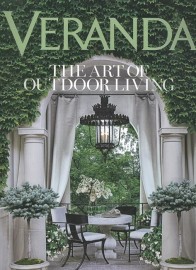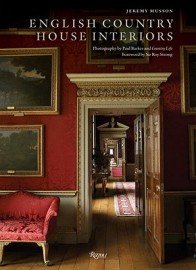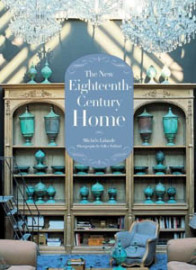What a surprise Kirby Hall is!
Kirby Hall is a beautiful and truly innovative Renaissance masterpiece with gardens that were once thought to be the best in England… and yet for the most part it is an unoccupied ruin! But like many ruins from before the mid 20th century it is delightfully atmospheric, an impression that is assisted by the rather theatrical peacocks that appear to be stage-managed to perch on key architectural features for maximum effect. Managed by English Heritage it is still owned by the Finch Hatton family; one of whom, Denys Finch Hatton (1887-1931) was immortalised in the film dramatisation of Karen Blixen’s memoir ‘Out of Africa’.
Kirby is not a huge rambling pile but actually quite compact. It was started in the 16th century by the politically ambitious Sir Humphrey Stafford and then taken over by Sir Christopher Hatton – an even more ambitious nobleman who reached the dizzying height of Lord Chancellor after the Queen noticed his exquisite dancing. Hatton hoovered up many grand buildings that he was never to occupy. His purpose in amassing grand houses like the once fabulous Holdenby is made clear in a letter of 1583 in which he states that “leaving my other shrine, I mean Holdenby, still unseen, until that holy saint may sit in it to whom it is dedicated”. He was of course referring in this cringing panegyric to Queen Elizabeth I, likening her to a saint and to his houses as her shrines.
Many such houses were designed for the purpose of entertaining the monarch – the fount of all honour, not to mention funds! State apartments (often unoccupied by the owner) were prepared and no expense spared in expectation of a royal visit which often did not even happen. In fact Queen Elizabeth probably did not visit Kirby Hall but King James visited no less than four times. It was always a lottery though whether the crippling cost of a royal visit would either make or break you.
The courtyard at Kirby is strikingly unusual in that on the main range there is the traditional medieval layout of a great hall on the right side and the service areas on the left, in barely symmetrical layout; whilst the opposite range is innovative and quite continental, with its full length pilasters (never attempted before in England) and a spirited effort at symmetry. The significance of this is that European Renaissance ideas based on classical ideals of harmony and proportion had taken root in this unassuming little corner of Northamptonshire.
The quality of the carving on this range is exceptional and is probably derived from pattern books that began to be popular at this time. Pattern books meant you didn’t have to use an architect and Kirby Hall was probably the result of a collaboration between patron, surveyor and mason. These were obviously highly informed and skilled men of taste however. So skilled in fact that the great Inigo Jones was once thought to have been responsible for Kirby because of the many comparisons to his Banqueting Hall in Whitehall including the rhythmic poetry of the alternate rounded and triangular pediments of the windows.
A further striking feature of Kirby are the pair of bay windows in the state apartments, that in the opinion of Sachaveral Sitwell – writing in 1945 – looked like “two huge galleons tied up at anchor”. The Romans probably invented bay windows and Pliny the Elder certainly had one. It was not only a way to maximise sunlight but was also highly effective in extending 180* of views. The bays at Kirby are revolutionary in that they are outward looking onto the wider landscape when hitherto principal windows tended to look into courtyards and formal gardens. In fact rude nature was conventionally kept out and continued to be kept out until the 18th century, when houses were opened up to the wider landscape – so Kirby really is a trailblazer.
A charming and long lost feature of the house that hearkens back to good medieval practices, is that the whole of the left side of the courtyard was devoted to service and staff. This was a rigidly hierarchical society; the servants served the Lord and the Lord served the King. Lord Stafford’s motto ‘I will be loyal’ is still visible on the porch. Many of the senior servants were probably blood relations and lived in comfortable suites. Servants weren’t relegated to the rafters or stuffed into basements. Architecturally at least they lived in almost equal footing to the noble owners. Just as the adage goes a ‘family that eats together stays together’, the staff and owners did in fact eat together in the great hall, and the entire household was referred to as the ‘family’. They didn’t eat the same food of course (the servants got apparently inferior brown bread and the Lord got the supposedly superior white), and the Lord’s top table was set nearer the better window so he got more light – but the set up was relatively fair and inclusive.
Until that is the start of the retreat from the great hall, an understandably very unpopular event for the staff, one of whom (John Selden) complained in the 1650’s that ‘the Hall was the place where the great Lord did used to eat… Where he saw all his servants and tenants about him. He eats not in private… except in times of sickness, when once he became a thing cooped up, all his greatness was spoiled.’
The retreat from the great hall was inevitable though as rarified French courtly practices gradually became fashionable from the British royal court down. Within a hundred years the household staff became invisible, softly treading along masterfully concealed back passages and toiling hidden and unobserved beyond the green baize door. The very Christian ideal of the wider ‘family’ was simply dissolved into upstairs and downstairs, an arrangement which has not changed much since the 17th century. In fact the protodemocratic principles of the great hall only survive today in some workplace canteens and management notions of the corporate family.
The long slow decline of this great monument began as early as the start of the 18th century when it’s then owner died childless. Soon the nobles had moved out and shepherds and sheep moved in. In a beautiful piece of purple prose, the Revd. Canon James saw in the 1830s ‘the very action of decomposition going on, the crumbling stucco of the ceiling feeding the vampire ivy, the tattered tapestry yet hanging on the wall, the picture flapping in its broken frame.’
One’s first impression on walking through these elegant ruins is that there must have been some ghastly catastrophe or a whole string of catastrophes. But as the architectural historian John Summerson eloquently put it in 1971: ‘The beauty of Kirby’s decline is that it was private and without violence. This house was never burnt, ravaged, used as a quarry or assaulted by mobs. It simply lapsed… Today the masonry is still unsullied, sharp and clear, so that if roofs, windows and doors suddenly reassembled themselves, the stones would take it as an unsurprising compliment.’



















